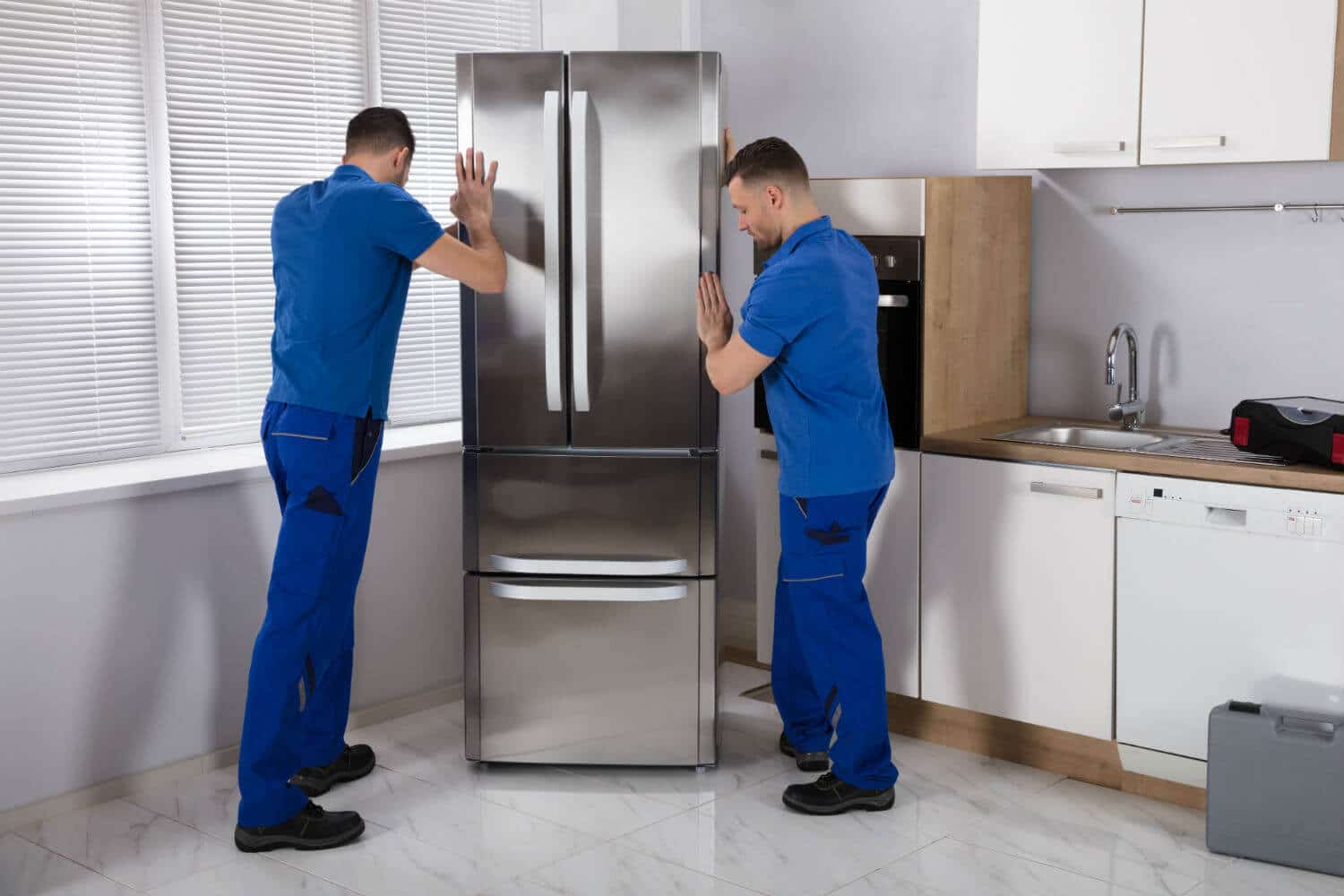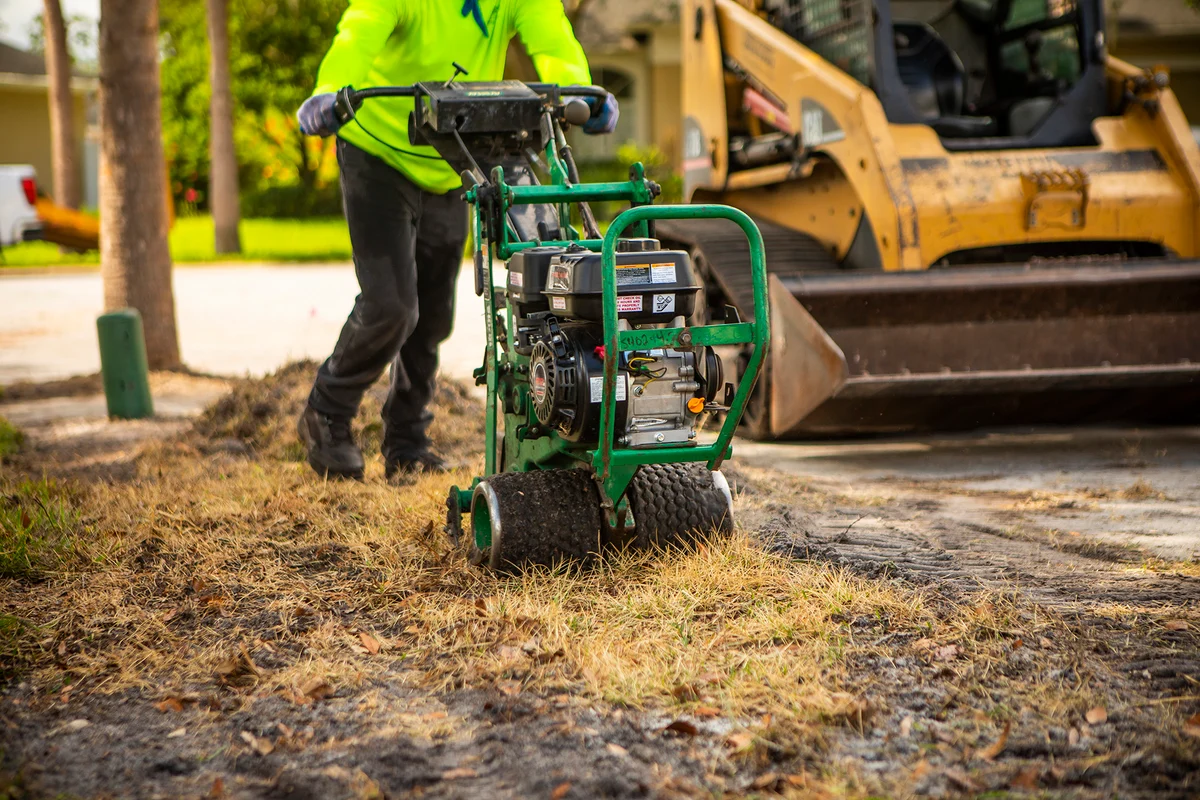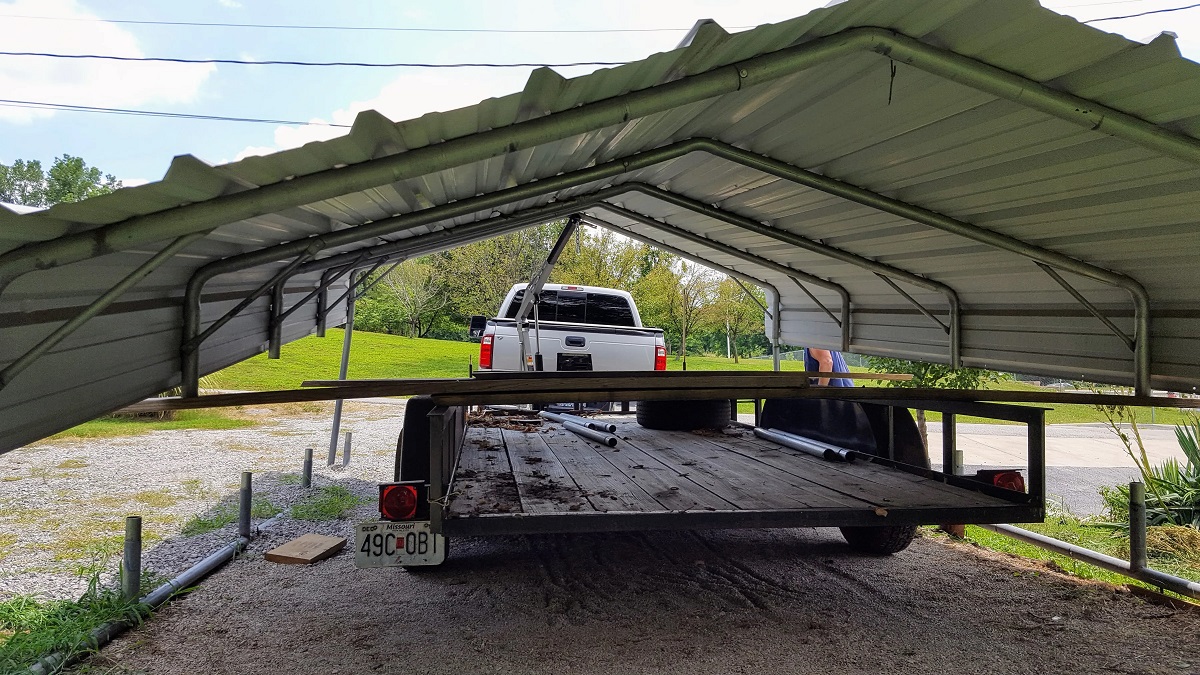

Articles
How To Move A Heavy Vanity
Modified: August 26, 2024
Looking for articles on how to move a heavy vanity? Discover expert tips and step-by-step instructions in our informative guide.
(Many of the links in this article redirect to a specific reviewed product. Your purchase of these products through affiliate links helps to generate commission for Storables.com, at no extra cost. Learn more)
Introduction
Moving a heavy vanity can be a daunting task, especially if you don’t have the right tools or experience. Whether you’re renovating your bathroom or moving to a new home, properly handling a heavy vanity is crucial to avoid damage to the vanity itself and any surrounding surfaces.
In this article, we will guide you through the process of safely moving a heavy vanity. We’ll provide you with step-by-step instructions and helpful tips to make the task more manageable. So, let’s get started!
Key Takeaways:
- Safely move a heavy vanity by assessing its weight, clearing the pathway, gathering necessary tools, disassembling with care, and lifting and moving with caution. Protect the vanity during transportation and reassemble it in its new location for a successful move.
- Prioritize safety, proper planning, and teamwork when moving a heavy vanity. Utilize protective gear, proper lifting techniques, and secure transportation to minimize the risk of damage. Seek professional assistance if needed for a stress-free move.
Read more: How To Move A Heavy Pergola
Assessing the Weight and Size of the Vanity
Before you begin the process of moving a heavy vanity, it’s important to assess its weight and size. This will help you determine the best approach and ensure that you have the necessary tools and equipment.
Start by measuring the dimensions of the vanity, including its length, width, and height. This will give you an idea of how much space you’ll need to maneuver it through doorways and hallways. Additionally, make note of any obstacles, such as stairs or narrow passages, that you may encounter during the move.
To assess the weight of the vanity, you can either refer to the manufacturer’s specifications or use a scale. If the vanity is too heavy to lift on your own or if you’re unsure of its weight, consider enlisting the help of a professional mover.
Based on the weight and size of the vanity, you can determine whether you’ll need additional assistance or special equipment, such as a furniture dolly or straps, to safely move it. It’s always better to be prepared and have the right tools at your disposal to minimize the risk of injury or damage to the vanity.
Once you have a clear understanding of the weight and size of the vanity, you can proceed to the next step: clearing the pathway.
Clearing the Pathway
Clearing the pathway is an essential step in moving a heavy vanity smoothly and safely. By clearing obstacles and ensuring a clear and unobstructed path, you minimize the risk of accidents and make the process more manageable.
First, remove any items that may hinder your movement, such as rugs, furniture, or decorations. It’s also advisable to temporarily remove any doors that might be in the way to create more space. This will facilitate the movement of the vanity and prevent any potential damage to the doors.
Next, inspect the pathway for any potential hazards. Check for loose floorboards, uneven surfaces, or slippery areas. Address these issues before moving the vanity to prevent accidents or damage.
If you need to navigate stairs, ensure that they are clear and free from any debris. Consider using ramps or plywood to create a smoother surface, making the movement of the vanity easier and safer.
During the clearing process, take note of any potential obstacles that may require extra caution, such as low-hanging light fixtures or wall-mounted decorations. By identifying these obstacles beforehand, you can plan your movements accordingly and avoid any unnecessary damage.
Keeping the pathway clear and hazard-free is crucial in ensuring a successful and accident-free move. With a clear pathway, you can now proceed to the next step: gathering the necessary tools and equipment.
Gathering the Necessary Tools and Equipment
Before you begin disassembling and moving the heavy vanity, it’s important to gather the necessary tools and equipment to ensure a smooth and successful process. Having the right tools at hand will not only make the job easier but also help protect the vanity from damage.
Here are some essential tools and equipment you’ll need:
- Protective Gear: Wear gloves to protect your hands from sharp edges and to provide a better grip when handling heavy components.
- Tools: Have a set of basic tools available, including screwdrivers, pliers, and an adjustable wrench. These will be used for disassembling and reassembling the vanity.
- Furniture Dolly: A furniture dolly is a wheeled platform that helps you transport heavy items with ease. Look for a dolly with a weight capacity that exceeds the weight of the vanity.
- Furniture Straps or Moving Blankets: Straps or moving blankets are useful for securing the vanity during transportation and protecting it from scratches or dents.
- Stair-Stepper Straps: If you have to navigate stairs during the move, consider using stair-stepper straps. These straps provide additional support and control when going up or down stairs.
- Packing Tape and Bubble Wrap: Use packing tape to secure loose components and bubble wrap to protect fragile parts, such as mirrors or glass countertops.
Ensure all tools and equipment are in good working condition before you start the move. It’s also helpful to have a clear plan in mind and gather any additional materials specific to your vanity, such as replacement screws or brackets.
Now that you have all the necessary tools and equipment at your disposal, you can move on to the next step: disassembling the vanity.
Disassembling the Vanity
Disassembling the vanity is a crucial step in moving a heavy vanity, as it not only makes the individual components lighter and easier to handle but also reduces the risk of damage during transportation. Here’s a step-by-step guide on how to disassemble the vanity:
- Remove Drawers and Doors: Start by emptying any drawers and removing them from the vanity. If your vanity has doors, unscrew the hinges to detach them.
- Detach Countertop: If your vanity has a separate countertop, detach it from the base. Depending on the installation, you may need to loosen or remove screws or brackets holding it in place.
- Disconnect Plumbing: If your vanity is connected to plumbing fixtures such as sinks or faucets, turn off the water supply and disconnect them. Place a bucket or container underneath to catch any residual water.
- Unscrew and Remove Mirror or Medicine Cabinet: If your vanity has an attached mirror or medicine cabinet, carefully remove any screws or mounting brackets and set them aside.
- Disassemble Vanity Base: If the vanity base is one solid piece, it may require some additional disassembly. Remove any screws or brackets securing the base to the wall and separate it into smaller, more manageable sections.
As you disassemble the vanity, be sure to keep track of all the screws, bolts, and other small components. It’s a good practice to place them in labeled baggies or containers to avoid losing them during the move.
Take your time during the disassembly process and be careful with delicate components, such as mirrors or glass countertops. If needed, enlist the help of someone to assist you in safely removing and handling these parts.
Now that the vanity is disassembled into smaller components, you’re ready to move on to the next step: lifting and moving the vanity.
When moving a heavy vanity, make sure to clear the path and have enough people to help lift and carry it. Use furniture sliders or a dolly to make the process easier and protect your floors.
Read more: How To Move A Heavy Shed
Lifting and Moving the Vanity
Lifting and moving a heavy vanity requires proper technique and precautionary measures to ensure the safety of both yourself and the vanity. Follow these steps for a successful and injury-free process:
- Enlist Assistance: Heavy vanities are best moved with the help of at least one other person. Having additional hands will make the lifting and moving process easier and safer.
- Use Proper Lifting Techniques: Before lifting, ensure you have a firm grip on the vanity and maintain a straight back. Bend your knees and use your leg muscles to lift the vanity, rather than straining your back.
- Set a Path: If the vanity is too large to be carried as a whole, plan a path for moving each component. Clear any obstacles in the way and establish a straightforward and obstacle-free route.
- Use Furniture Dolly: If available, place the heavier components, such as the vanity base or countertop, onto a furniture dolly to make the transportation easier. Secure the components onto the dolly using straps or moving blankets.
- Teamwork for Stairs or Uneven Surfaces: When navigating stairs or uneven surfaces, coordinate with your helpers to ensure a smooth and controlled descent or ascent. Use stair-stepper straps if available for added stability.
- Take Breaks: If the vanity is particularly heavy or if you need to cover a long distance, take periodic breaks to rest and avoid straining yourself. Pushing through exhaustion can increase the risk of accidents or injuries.
It’s important to communicate and work as a team when lifting and moving the vanity. Coordinate your movements and ensure everyone is on the same page to avoid any mishaps.
If the vanity is too heavy or too difficult to move on your own, it’s advisable to seek professional assistance. Professional movers have the expertise and equipment to handle heavy items safely and efficiently.
With the vanity successfully lifted and moved, let’s move on to the next step: protecting the vanity during transportation.
Protecting the Vanity during Transportation
Transporting a heavy vanity can be rough, especially if you’re moving it over long distances or in a vehicle with other belongings. Taking the necessary precautions to protect the vanity during transportation is crucial to prevent any damage. Follow these tips to ensure the safety of your vanity:
- Secure Loose Components: Before loading the vanity into the vehicle, make sure all loose components such as drawers, doors, and countertops are securely fastened. Use packing tape or straps to hold them in place and prevent any shifting during transit.
- Wrap Fragile Parts: If your vanity has any delicate parts like mirrors, glass countertops, or decorative elements, wrap them in bubble wrap or moving blankets. This will provide an extra layer of protection during transportation.
- Use Furniture Pads: Place furniture pads or blankets around the vanity to prevent scratches and dents. Secure them in place using straps or bungee cords to keep the vanity well-padded and secure during transportation.
- Properly Load and Secure: When loading the vanity into the vehicle, ensure it is placed in an upright position to prevent any potential damage. Use tie-down straps or ropes to secure the vanity and prevent it from shifting or toppling over during transit.
- Consider Professional Services: If you’re concerned about the safety of your vanity during transit, you may want to consider hiring professional movers or a transportation service. They have experience in handling and securely transporting heavy items, ensuring maximum protection.
It’s important to drive carefully and avoid sudden stops or rough movements while transporting the vanity. This will minimize the risk of damage caused by shifting or impact.
Upon reaching your destination, carefully unload the vanity and follow the next step: reassembling the vanity.
Reassembling the Vanity
Now that you’ve successfully moved the heavy vanity to its new location, it’s time to reassemble it. Reassembling the vanity requires careful attention to detail to ensure everything fits together properly. Follow these steps to reassemble your vanity:
- Refer to the Documentation: If you have the original documentation or installation instructions for the vanity, refer to them as a guide for the reassembly process. They will provide valuable information on how the vanity components fit together.
- Start with the Vanity Base: Begin by reassembling the vanity base. Align the sections and use the appropriate screws and fasteners to secure them together. Ensure that the base is level and stable.
- Attach Countertop: If your vanity has a separate countertop, position it on the base and secure it according to the manufacturer’s instructions. Use screws or brackets to ensure a secure attachment.
- Reinstall Drawers and Doors: Place the drawers back into their respective slots and reattach the doors using the hinges. Check that they open and close smoothly and make any necessary adjustments.
- Connect Plumbing Fixtures: If you disconnected any plumbing fixtures during the move, reconnect them carefully. Ensure that all connections are tightened properly, and turn on the water supply to check for any leaks.
- Mount Mirror or Medicine Cabinet: If your vanity had an attached mirror or medicine cabinet, use the appropriate mounting brackets or screws to secure it back in place. Check that it is level and secure.
- Test Functionality: Once the vanity is reassembled, test the functionality of the drawers, doors, and plumbing fixtures. Make sure everything is working properly and make any necessary adjustments if needed.
Take your time during the reassembly process and double-check that all components are correctly aligned and securely fastened. Pay attention to any specific instructions or details provided by the manufacturer to ensure a proper fit.
With the vanity successfully reassembled, you’ve completed the process of moving a heavy vanity. Admire your handiwork and enjoy your newly relocated vanity!
Conclusion
Moving a heavy vanity can be a challenging task, but with the right approach and careful planning, it can be accomplished smoothly and safely. By assessing the weight and size of the vanity, clearing the pathway, gathering the necessary tools and equipment, disassembling the vanity, lifting and moving it with caution, protecting it during transportation, and reassembling it in its new location, you can ensure a successful and efficient move.
Remember to prioritize safety throughout the entire process. Enlist the help of others to assist with the lifting and moving, use proper lifting techniques, and take breaks when needed to prevent injuries. Clearing the pathway and securing loose components are essential steps to avoid accidents during the move. Utilize proper wrapping and padding techniques to protect delicate parts and ensure a damage-free transportation.
By following these guidelines, you can minimize the risk of damage to the vanity and create a smooth transition into its new space. If you’re unsure or uncomfortable handling such a heavy item on your own, don’t hesitate to seek professional assistance to ensure a safe and stress-free move.
Moving a heavy vanity may require some effort, but it can also be an opportunity to refresh your space and create a new look in your bathroom. Embrace the challenge and enjoy the satisfaction of successfully relocating your vanity to its new home.
Frequently Asked Questions about How To Move A Heavy Vanity
Was this page helpful?
At Storables.com, we guarantee accurate and reliable information. Our content, validated by Expert Board Contributors, is crafted following stringent Editorial Policies. We're committed to providing you with well-researched, expert-backed insights for all your informational needs.















0 thoughts on “How To Move A Heavy Vanity”